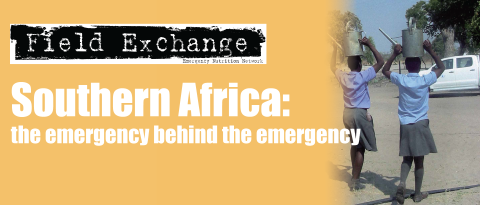Child survival during the 2002-2003 drought in Ethiopia
Summary of published research1
Early indications were that the 2002/3 drought that affected 13.2 million people in Ethiopia would lead to increased child mortality, despite a large relief operation. Humanitarian agencies reported sharp increases in child deaths and pockets of acute distress in some hard-hit localities. In response, the 2004 Ethiopia Child Survival Survey (ECSS) was designed to investigate the impact of the drought on child survival in the general population. The survey, reported in a recent paper, covered 4816 households in both drought-affected and nondrought affected areas, as well as rural and urban localities. Data from the ECSS indicate that child mortality was indeed higher in drought-affected areas.
However, a closer analysis by the authors reveals that this differential is attributable to chronic conditions in those localities, rather than the immediate impact of the 2002/3 drought. Multivariate analysis was used to construct a model for the determinants of child survival in the sample population. The analysis showed that household level demographic factors, household level food and livelihood security, community level economic production, and access to potable water were predictive of child survival. Residents of drought prone areas tend to fare worse with respect to most of these variables and thereby suffer persistently lower levels of child survival and higher levels of chronic malnutrition, even during non-drought years.
Additionally, household receipt of food aid had a small but significantly positive association with child survival, even though the ECSS cannot determine either the underlying causal mechanisms of this association or the role of confounding factors. Thus, receipt of emergency food aid in the acute phase of crisis may mitigate but cannot completely overcome chronic adverse effects.
The authors argue that future gains in child survival will demand additional and longerterm investments in public health, nutrition, livelihoods, and, when necessary, emergency interventions. At the same time, the data suggest that water provision, efforts to improve livelihoods by increasing livestock ownership, and reduced exposure to production crises would likely have a greater protective effect on excess mortality during drought periods than emergency food aid distributions alone. Consequently, future relief operations should diversify away from undue reliance on a general food ration.
1De Waal, A, Taffesse. S and Carruth. L (2006). Child survival during the 2002-2003 drought in Ethiopia. Global Public Health, June 2006; 1 (2), pp 125-132
Imported from FEX website


